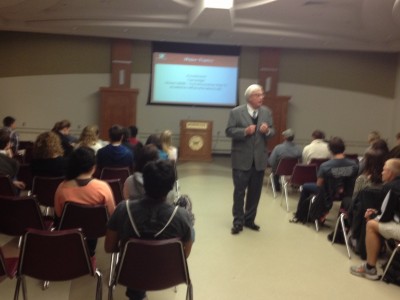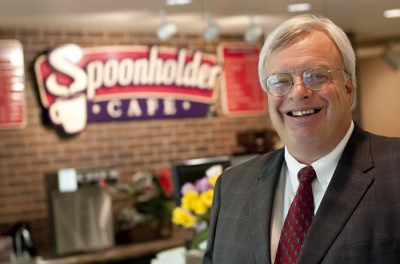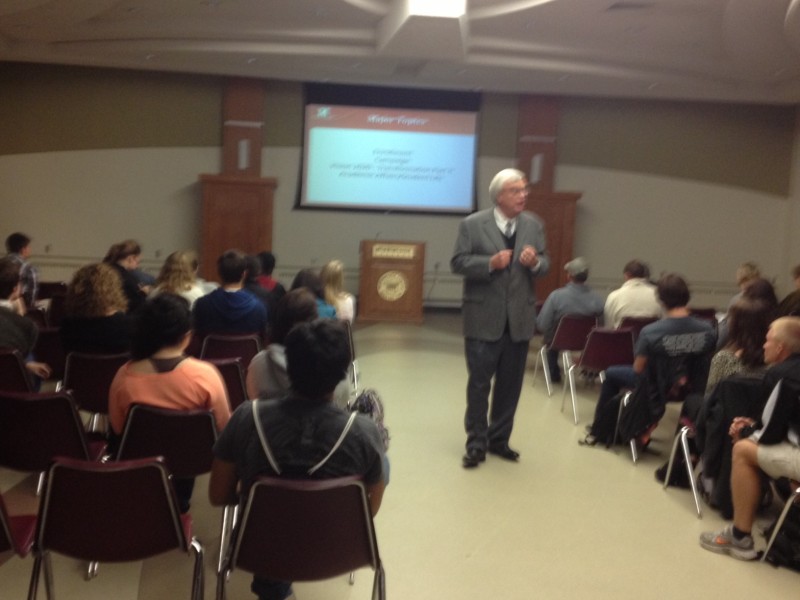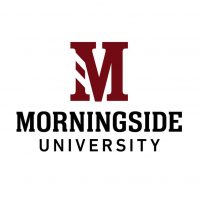By Gustav Hollnagel–

During homecoming, the board of directors and current administrative staff sat together to discuss the future of Morningside College. They had three big discussions, which involved student life/academic affair and enrollment but focused mainly on the issue of campaigning to promote Morningside’s “Vision 2020”. On Wednesday, October 24, 2012, president John Reynders caught students up to speed about recent developments.
Vision 2020 centers on getting $50 million until 2019 to promote scholarships, endowments and capital projects. So far, $31.2 million have been raised. Endowments are basically savings, which currently account for $40 million, therefore being relatively small compared to billions of dollars that public universities accumulate.
The largest concern or prospect for the future is the improvement of campus in terms of facility management and expansion. Morningside’s capital projects include the newly instituted idea of the “academic village”, but also improvements intended for Eppley auditorium and Dimmitt Hall.
The academic village project will cost $12.7 million and intends to create more opportunities for nursing, education, and agricultural industry, which would be an entirely new academic program on campus.
The project will materialize on the runway between the science center and the learning center, and contrary to the belief that the new building will show off a skywalk, this image actually represents the idea of a common lounge for all Morningsiders to casually mingle with peer students and professors. The basic architectural design of the academic village is therefore laid out but needs further adjustment based on the future budget.
Improvements to Eppley Auditorium will focus on the auditorium itself, assuming a use of one million dollars to renovate lights, sound, flooring, walls, and painting jobs. The east-end parking lot will make way to the academic village and be replaced by a surrounding green space area.
Dimmitt Hall has been marked for improvements in air conditioning, heating, plumbing and electricity as the priorities. The allocated amount of $4 million may also help to replace some 400 beds.

In terms of enrollment, the trend is slightly downward, which president Reynders attributes to the state of the economy and the media coverage on the value of education. In 2000, Morningside had 770 students. Now, there are a little over 1,200 full-time students (indicating a general growth of 63 percent since 2000). Long-term, the current administration places the “right” number of students for this college at 1,400, implying a highly long-term, gradual progression in size of enrollment.
After the president finished presenting, questions were being asked. One student asked about the impact of all this investment in facilities on student tuition costs.
“This will have no direct impact on tuition increases”, the president said. He explained that usually resources, salaries, utilities, and costs for health care would drive up tuition.
Another question was why the new program of Ag-industry conceptualized. The president explained, “Before 1997, Morningside had good Ag-industry-business program, which went away after livestock industry waned in the community.” The new program could involve banking, food safety, and laboratory work. “About everything we do in this area is related to agriculture”, Reynders said. The influence for the final decision came from the local community and businesses looking for more qualified work, providing students with an “opportunity for another little niche” in potential careers.
Vice president for student life and enrollment Terri Curry said, “Students and employers [will benefit the most], because students leaving these programs will be much more prepared to go out and employers will win for better workforce. There isn’t anything better than placement rates that are high, and keeping employee satisfaction.”
With regard to the academic village and its construction, another question was what would happen if the ambitioned goal for financial assistance through donations were not met by 2019.
Reynders assured, “We’re doing all in our power to raise the money as quickly as we can. Once the money is here we will begin.” He also said that it couldn’t take longer than 2019, hinting at the pressure to raise it more quickly. A subsequent question concerned the environmental implications of the new facilities. The academic village will be LEED-certified (silver) but will not show a plaque, as these may cost up to $40,000, money that the administration could use otherwise.
Curry is excited about the future for faculty, students and for the community in general: “The goal is for the donations to come from outside of Sioux City, causing an infusion of money from the outside. It’s a win-win for everyone.”
—





